Historic Features
THE CRUSADE CHEST
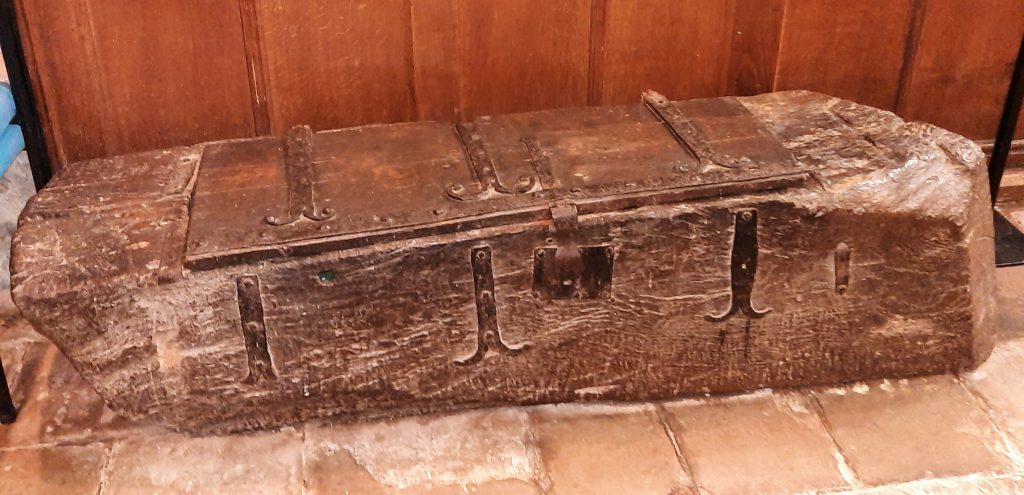
The Crusade Chest is of the ancient dugout construction. It consists of a large, single main trunk of an oak tree. It is wrought iron banded to provide for a strap-hinged lid and to prevent splitting. It is almost certainly ‘bog hardened’, by immersing in mud and underwater and it is too heavy to move other than being dragged by a horse. An Edict issued by Pope Innocent III instructed all churches, that had no other secure storage, should install one and that they were to have three locks. One was to be held by the Bishop, one by the Priest and one by a lay member, usually a churchwarden. A chest with only one lock, such as the St Gregory’s, Morville example, almost certainly predates the Edict.
THE ELIZABETHAN ALMS CHEST
The Elizabethan chest is constructed of weathered Oak boards that are tenoned into box form with legs. It is steel banded and fitted with three locks and is of a style that is characteristic of the period around 1530 – 1560, and that would bring it into line as of it being brought into the church as the result of ‘The Poor Law’ of 1552. It is the chest that is believed to have been used by the churchwardens to hide the church silver by dumping it in the Mor brook ahead of advancing Parliamentarian troops at the time of the English Civil War. There it remained safely lost for many years, until a very dry summer exposed the corner of the chest. Local family ‘lore’ is adamant that the two churchwardens were both lost in the conflict and no-one knew of the whereabouts of the chest or valuables. However, all the silver was safe.
THE FOUR APOSTLES WOODEN CARVINGS
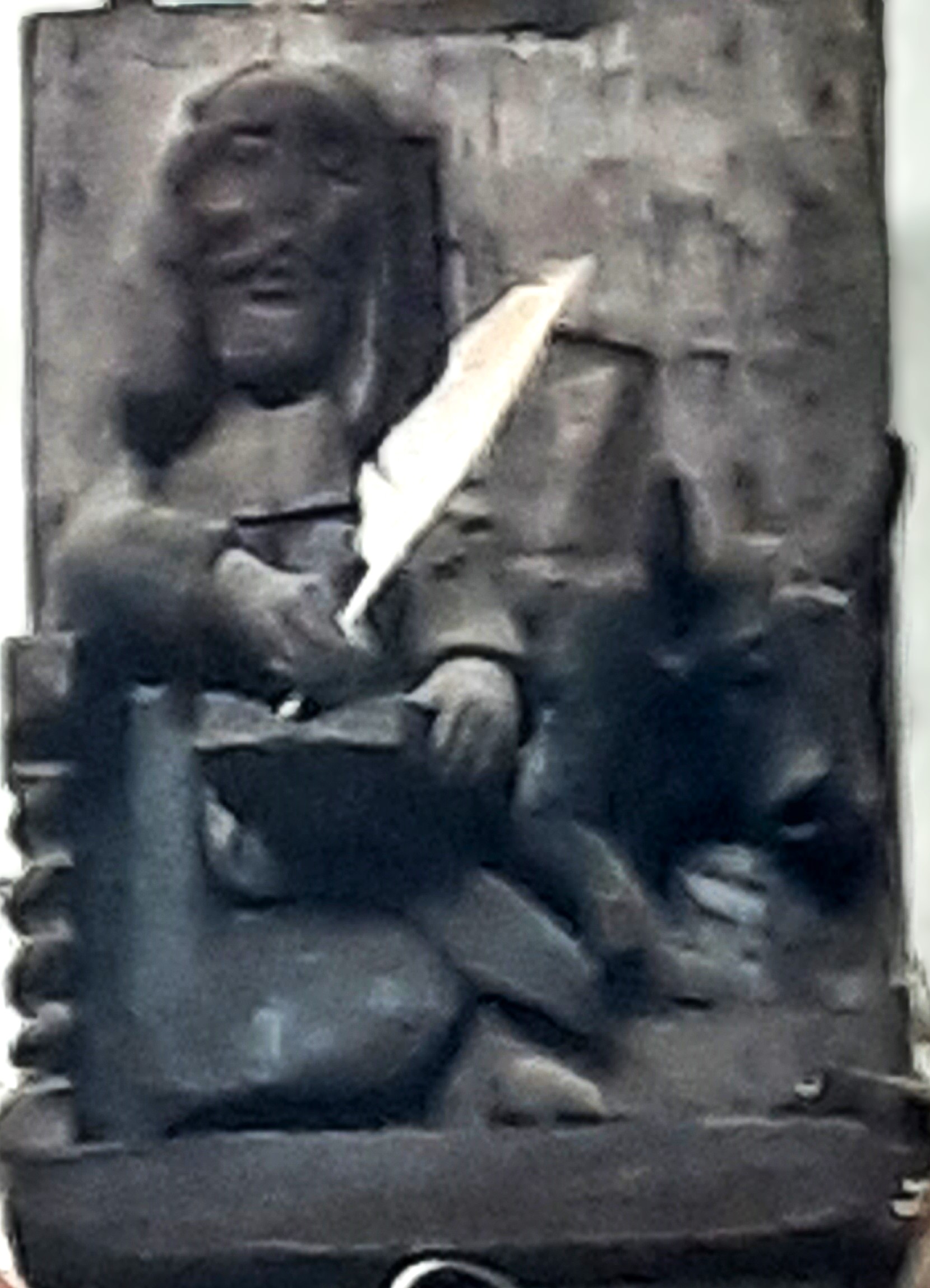
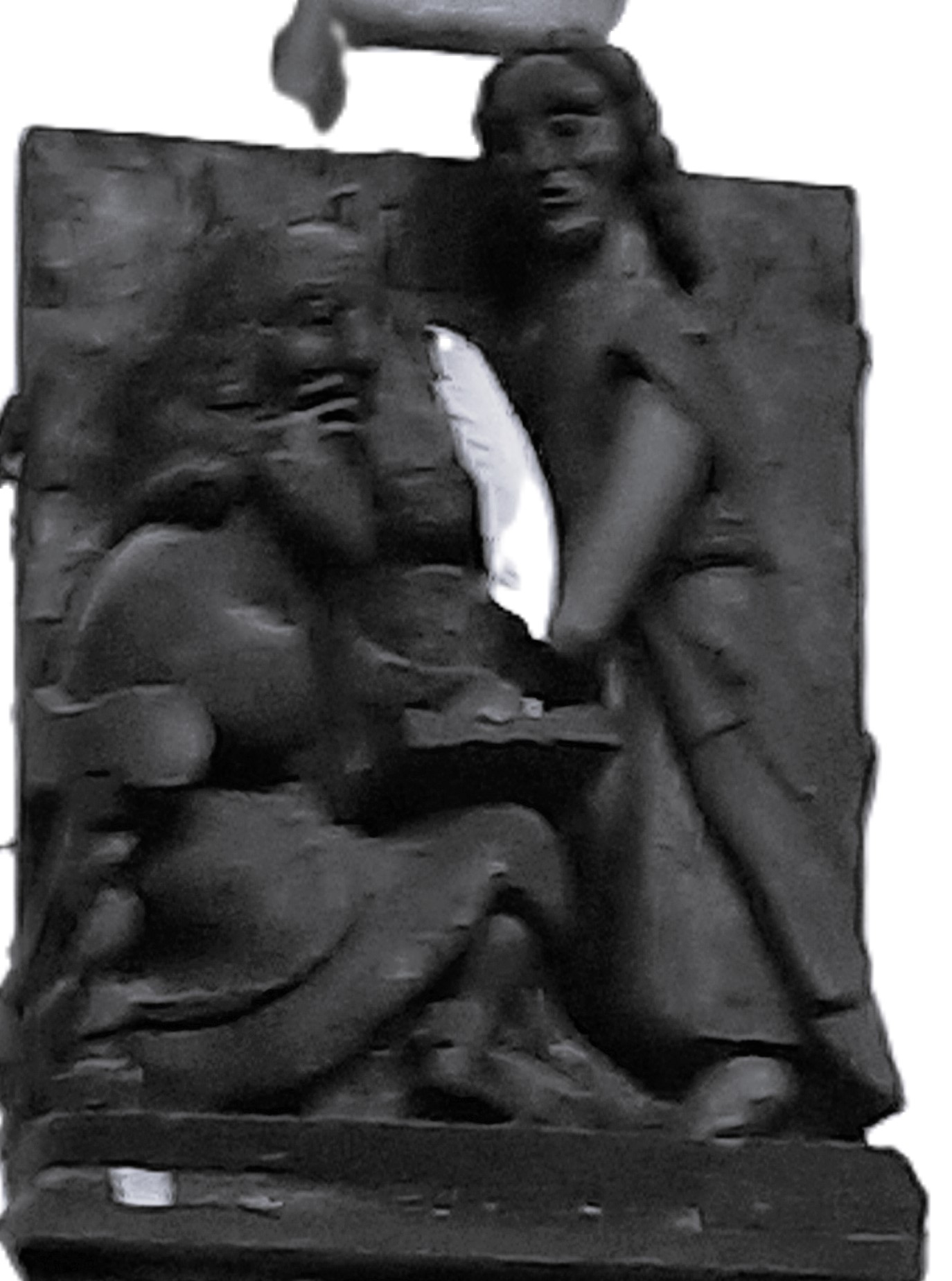
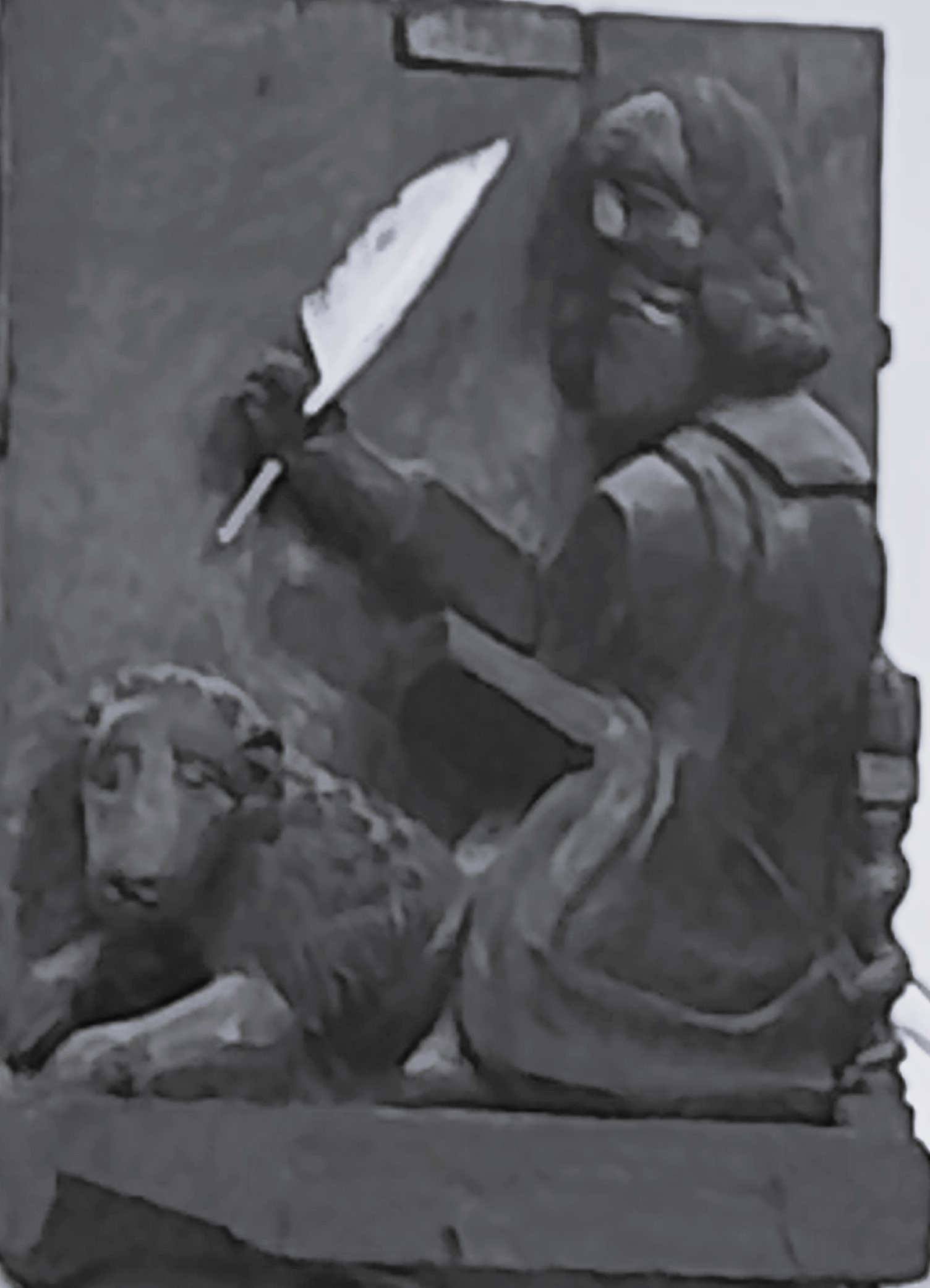
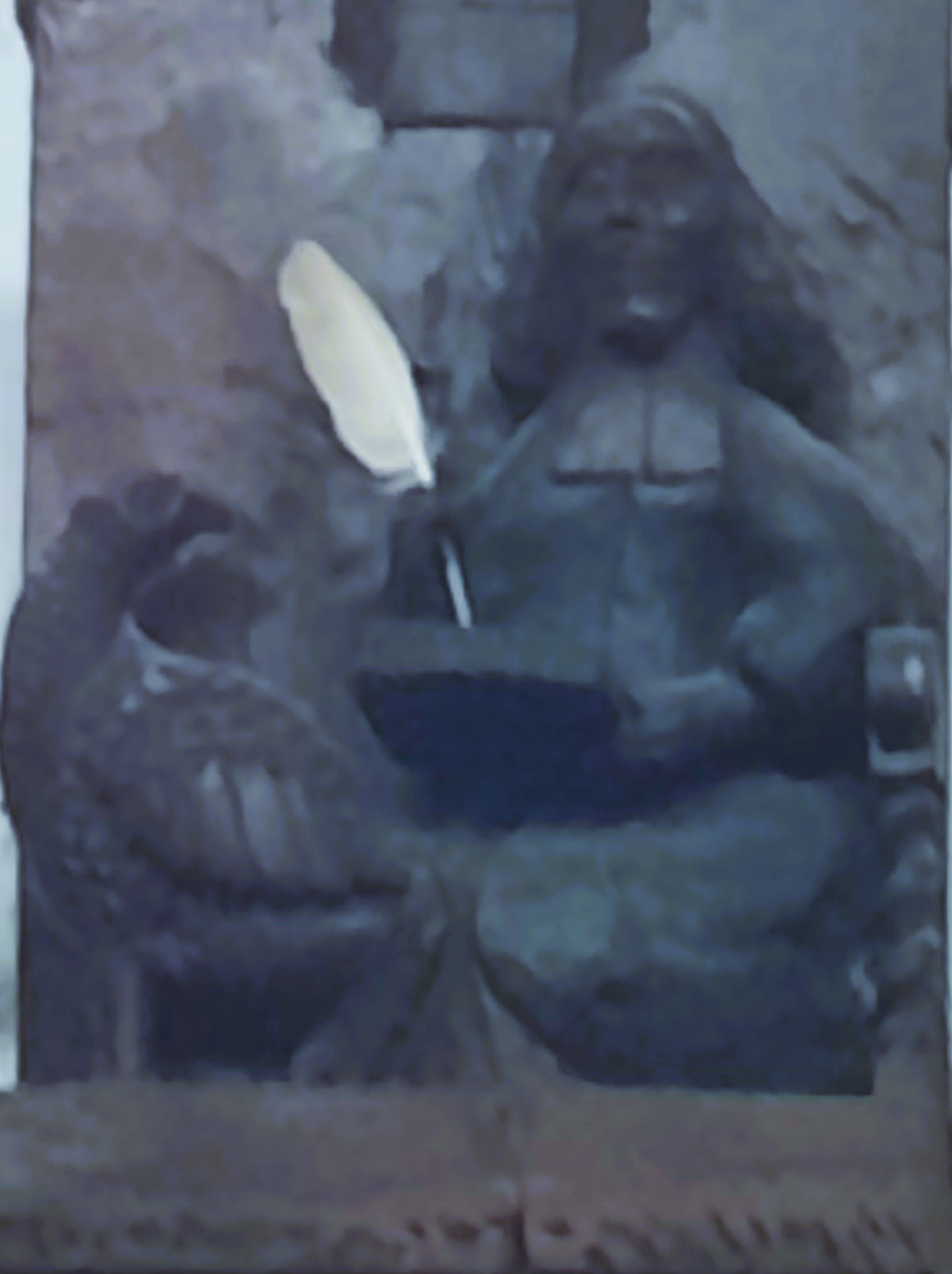
Looking along the aisle toward the Main East Window at the four imposts, each are graced with a wooden carving. They are the four Apostles carved in ‘Alto Relivo’ from a solid oak block and clearly coloured, probably with a colour stain rather than paint. The four Apostles are each carved with an emblem: Matthew with winged man; Mark with winged Lion; Luke with winged Ox and John with Eagle. The plaques may have been destined as pew ends or screen panels, but these early seventeenth Century carvings are far more appropriate where they are today.
THE CHANCEL WINDOW (NORTH SIDE)
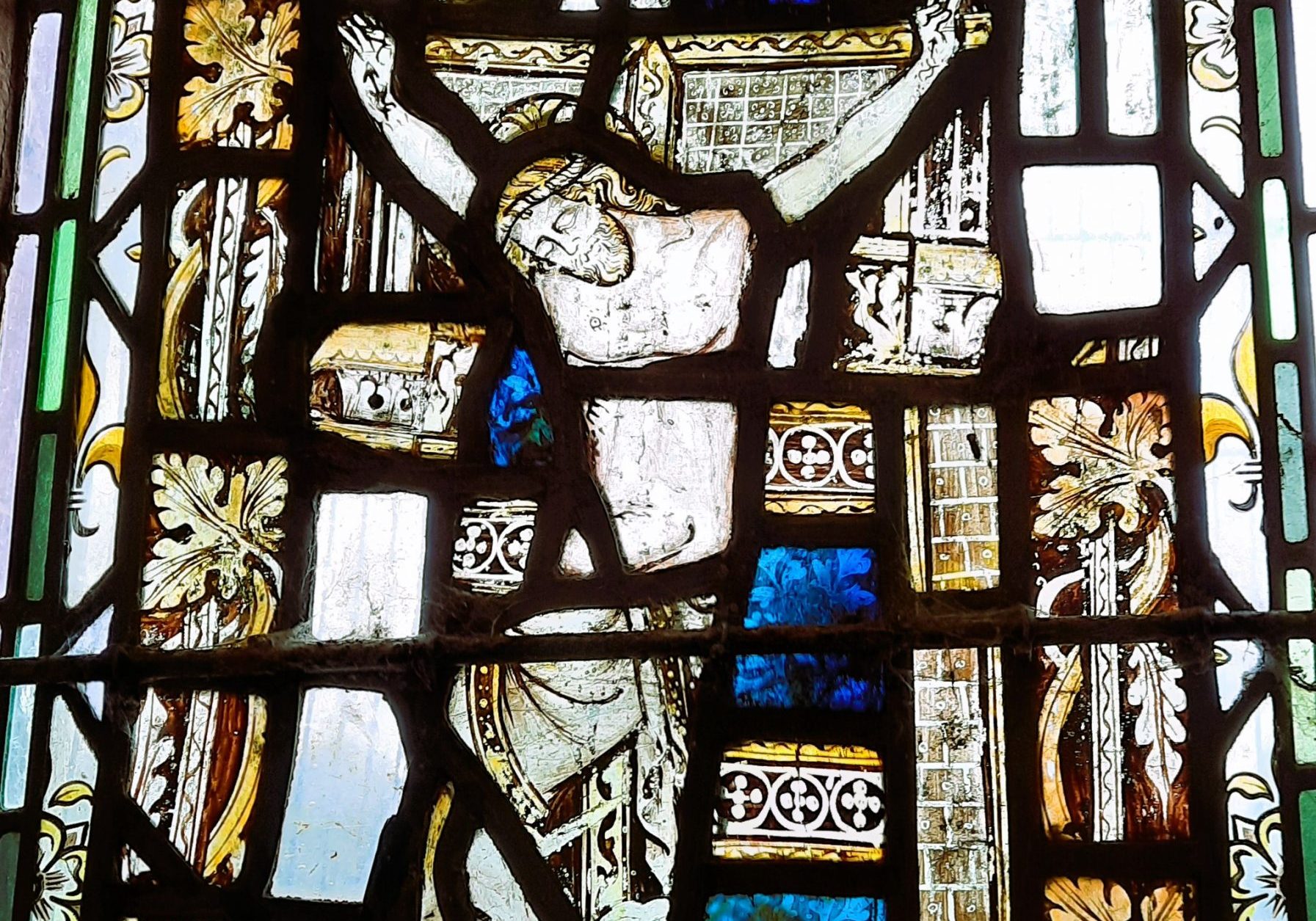
This small window comprises the remains of mediaeval glass depicting the crucifixion. It was smashed by Cromwell’s vandalising troops during their destructive visit to the St Gregory the Great Church in 1646.
The window had been taken out for lead repair and placed against the tower wall on the second floor of the tower. It was trampled and smashed.
What remained was carefully re-assembled and the resulting window replaced. That it illustrates so clearly how heritage and history can so easily be destroyed, is clear, but spend a moment in reflection.
The sharpness of the shards, the poignancy of the hurt and the sacrifice, leave an indelible memory to take away.
THE SOUTH PORCH
When the South Porch was renewed in 1982 the old foundations revealed a macabre discovery - over a dozen skulls indicated the burial of adults and children in a vertical posture. This was likely to be the result of one of the many plague onslaughts in the district, possibly that of the last great plague of 1664.
THE MAIN NAVE DOOR
The heavy oak south door is early twelfth Century, and is almost certainly contemporaneous with the building, having vertical board outside and horizontal board inside, locked together with lump headed wrought iron nails, driven through and clenched inside.
It is difficult to date wrought iron without knowing the sulphur and carbon content. Wrought iron was open hearth heated in clay beakers to cherry red, eutectic condition, ‘puddled’ and hammered to rough, and uneven shapes and scrolls.
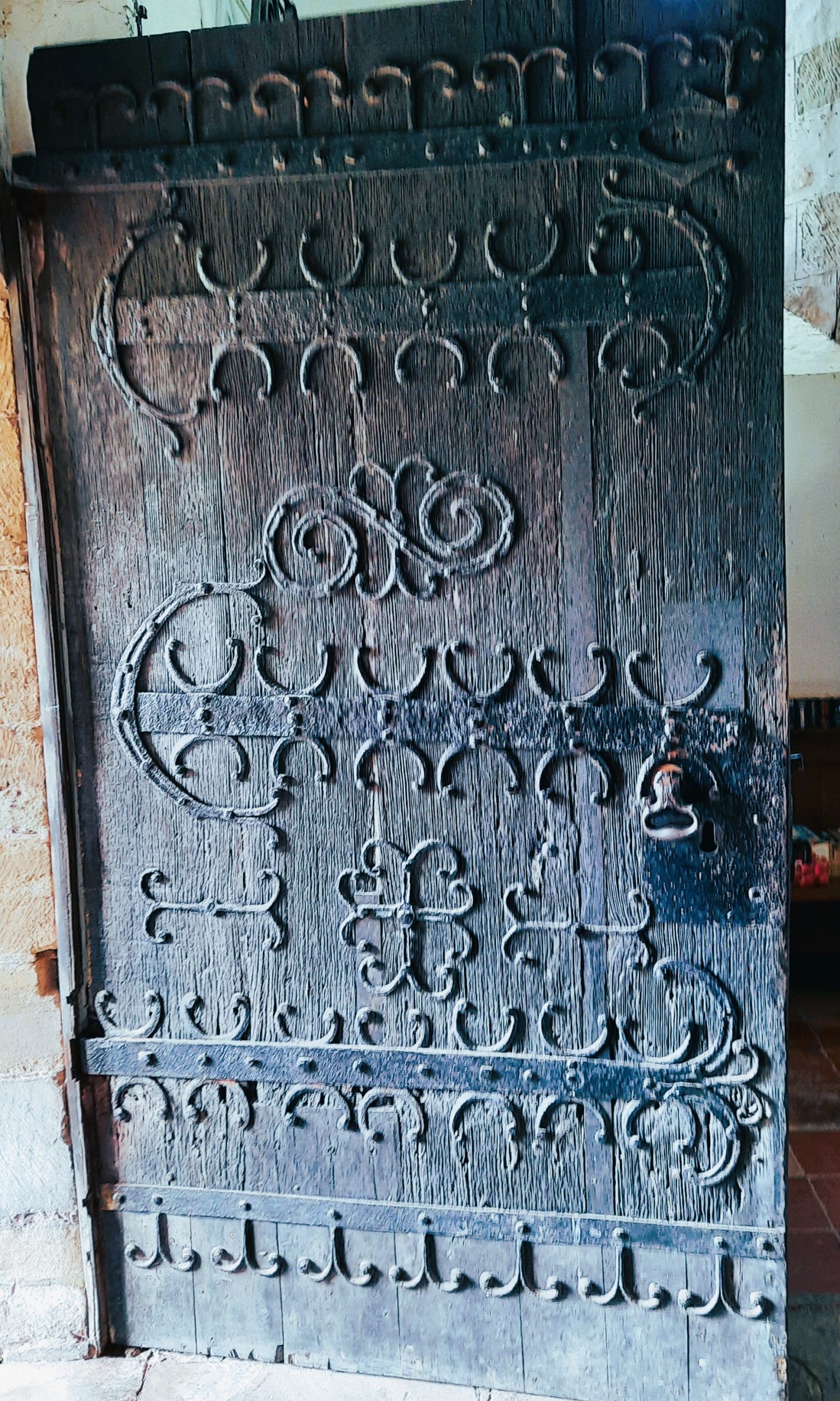
THE MORVILLE DRUM FONT
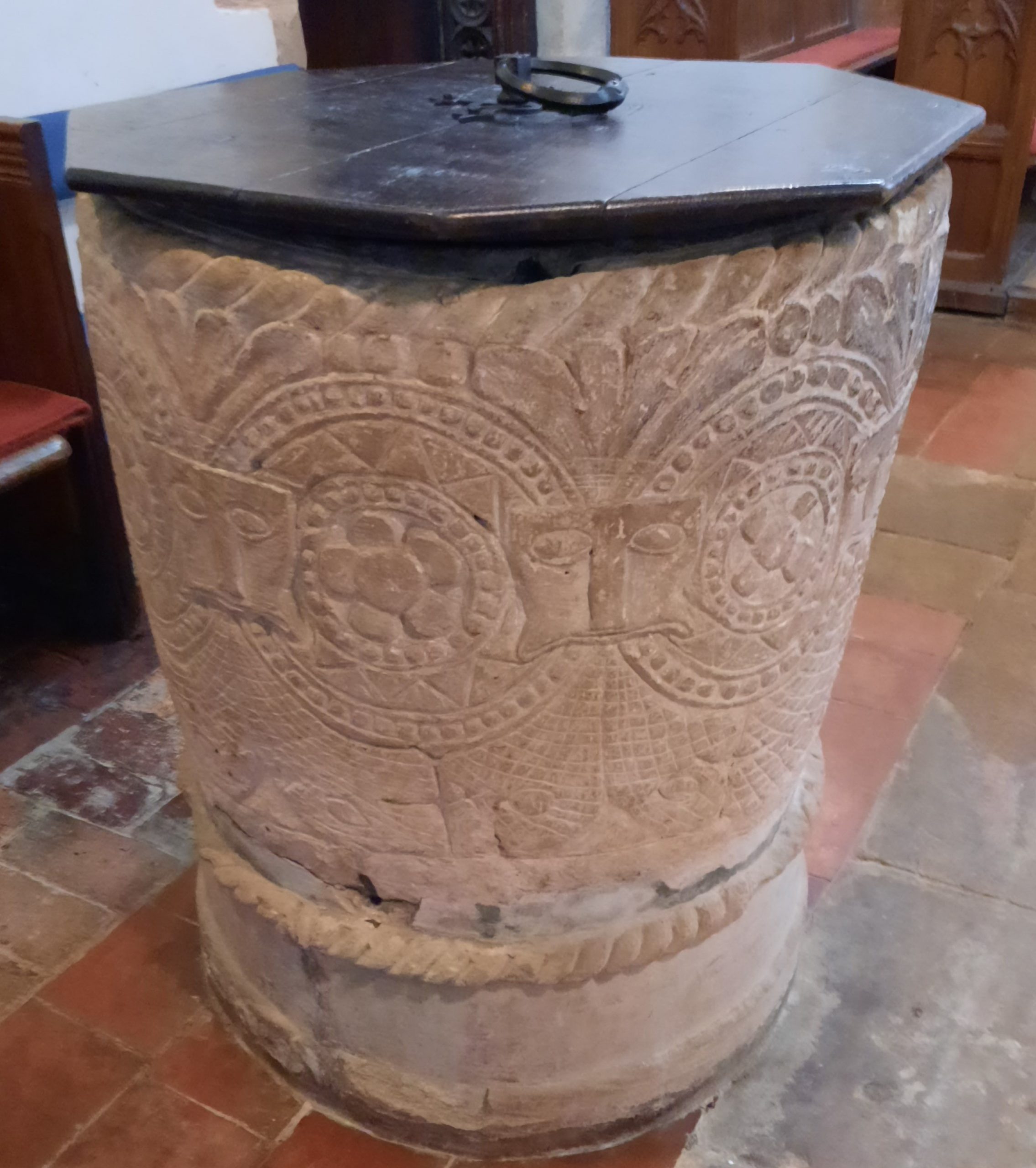
The shape is a characteristic Saxon or early Norman lead lined bowl in carved, hard limestone. It has been carved from a single quarried piece and transported, almost certainly from Wenlock Edge. The work would have been finished on site and because of its fragility, it will not have been moved in its lifetime.
It would be so difficult to move, that the possibility exists that it did come from the earlier Saxon church that was being replaced in stone and has stood for nine hundred years. The carvings around the body of the Font show a hint, perhaps as a reminder of the pagan image of ‘The Green Man’ and its pre Christian link to fertility.